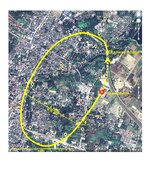For example, IJA aircraft lost in the battle of Burma for a year from December 7, 1942 to December 8, 1943 are reported 72.
Not two or three.

Source: Domei Monthly Report Vol.7/No.12 issued in December, 1943
(Library: Japan Press Research Institute)
新聞通信調査会
Not two or three.
Source: Domei Monthly Report Vol.7/No.12 issued in December, 1943
(Library: Japan Press Research Institute)
新聞通信調査会
Last edited:

